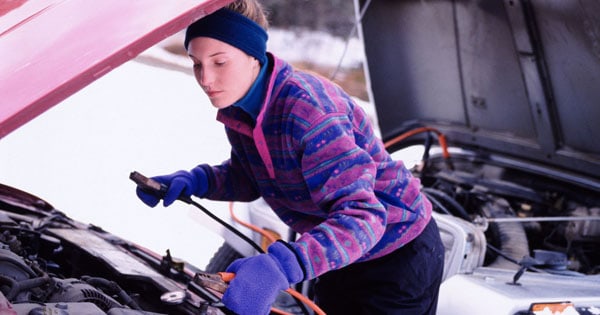Snowy winters can definitely make driving a bit more challenging than usual. If you’re a regular driver, make sure to take the necessary precautions for your vehicle before hitting the icy streets. Follow these simple, handy tips to stay safe on the road this winter.
1. Get the correct type of oil change.
Vehicle oils are not all made the same, so make sure to get one that is right for your car and the current season. When your car is about to reach its 30,000 mile mark, an oil change is absolutely necessary. As the season gets colder, oil gets thicker. Check your owner’s manual or ask your local mechanic for the best type of oil to get your car at its optimal running state.
2. Check your windshield wipers.
Windshield wipers typically need to be changed every year. During the colder months, fill up its reservoir with washer fluid instead of the usual plain water. Why? The cold temperature will likely freeze that water. Make sure to also check the conditions of your defroster to help keep your windshield clear.
3. Give extra attention to your belts and hoses.
The wear and tear of belts and hoses are too often the last on the list. If you don’t want to risk your car not starting, especially in the winter, pay special attention to those parts.
4. Assess your tire pressure.
Tires need to be inflated properly for traction. During colder seasons, this traction gets compromised because of icy, slippery, wet roads. Air pressure in tires also decrease when environmental temperatures drop. Make sure to get your wheels checked before you plan on going for a long drive this winter.
5. Determine if you need snow tires.
All-season tires do not provide the same traction performance. If you live in a hilly or mountainous area, investing in snow tires will seriously help. Mounting and balancing these tires may come at different prices in every shop, so the best way to make actual cost comparisons is by asking for every store’s “out the door charge”.
6. Check if your antifreeze mixture is just right.
A 1:1 ratio of antifreeze (coolant) and water is the perfect mix to prevent the liquid from freezing during the winter. Be warned that if your mixture is not within the 50/50 standard, it needs to be fully drained from the vehicle and refilled. If you’re doing this job yourself, make sure not to pour antifreeze down the drain as disposing this fluid needs special equipment and materials. Asking your local mechanic on what to do if you’re going the DIY route is always best.
7. Have an emergency kit ready.
It always pays to keep an emergency kit inside your car, just incase any bumps on the road happen. Here are some essential items to consider keeping in your kit:
- Emergency blanket
- Extra boots and gloves
- Extra set of warm clothes
- Extra water and food
- Ice scraper
- Small shovel
- Flashlight
- Windshield wiper fluid
- Windshield wipers
- Flares
- Jumper cables
- Tool kit
- Tire chains
- Tire gauge
- Fully functional spare tire
- Tire-changing equipment
- First-aid kit
- Candles and matches
- Paper towels
- Abrasives like sand, salt, or cat litter—a bagful can provide extra traction for when a tire gets stuck in snow.
8. Devise a plan for when you get stranded.
When stuck in a snow emergency, remember to stay calm. Make sure you know what to do, where to go, and how far away help is before leaving your car. Lighting two flares and situating them at the opposite sides of your vehicle will make you more visible to incoming drivers. Running the engine and heater for 10 minutes before turning it off again will prevent engine damage while you wait for help. Leaving a small opening on a window will prevent snow from sealing it shut. Call emergency services the moment you encounter any form of vehicle problem, especially in a blizzard or at night.

